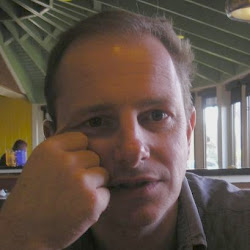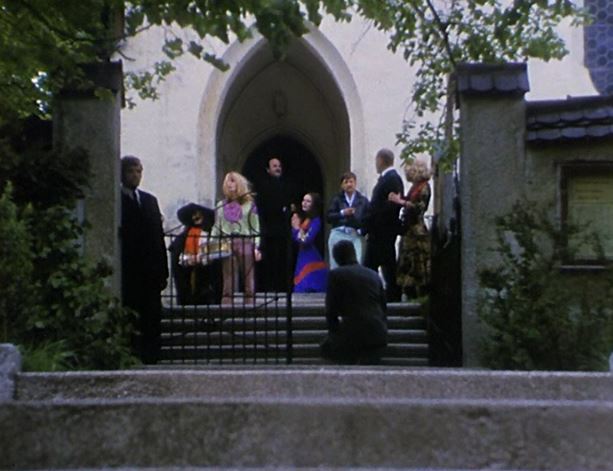There are lectures of different sorts in The Niklashuasen Journey (Rainer Werner Fassbinder); some political, some social, and some religious. Maybe it’s not good cinema, or maybe it is; it’s hard for us to answer that question because so few of us are going to get the chance to see this on the big screen. There is a crucial difference between watching this in such an environment and on DVD, where we are generally alone in our home or in a couple; and the cinema, which is a shared experience, which is more difficult to leave. We would perhaps enjoy the oratory more, such as is delivered in Niklashauser Fart by Walter Sedlmayr.
I sometimes think that directors like Fassbinder, who at least at this stage could never have predicted home video, and would never have catered for it anyway, were therefore quite happy making didactic cinema, feeling that audiences were in one sense captured. And it is possible to get into it on DVD; you just need to relax and stop twitching.
Walter Sedlmayr as the pastor has the opportunity to deliver his first long speech - given to Hans Boehm alone, and delivered during another long slow zoom – in clerical mode. Well, everyone expects clerics to be dull and personally I look upon this sort of thing as a challenge to the actors, and it’s them I rate on how well they do with it. After all, what kind of test is this? The actor Walter Sedlmayr is given a tedious script to read, is placed in a static position, given some clothes to wear, without even his character having a name; and he knows that there will be no camera cuts, just one long continuous shot. It must be murderously difficult, surely?
Walter Sedlmayr is a very good pastor, and that is without doubt. Also without doubt then is the fact that he must be also a very good actor.
This film in particular has been criticised, like other didactic efforts of the period (Godard again) for containing far too many direct speeches on social, economic and political issues. But I think what these films tell us, as when Hans Bohem delivers his projections on the soon to be founded anti-capitalist and free society, to a bunch of men, whose heads are darkened by the shadows of some trees (and we see their backs for God’s sake) – then that is what it must have been like in the 60s. In the 1960s, I am reckoning, if you were a young European person, you probably did go to a lot of spurious political meetings, whereat people talked at length and in serious manner about these things.
What is great about the scene in the trees, though, is that when the prophet shepherd Boehm has stopped talking, the men bend down to pick up clubs and then follow Boehm to the chapel, where he picks up Walter Sedlmyr, and sings a Leninist hymn. What is truly naïve about this film is the sheer amount of contradictory messages, settings and style. Is that what this world is like? Is it a place where Lenin and the Virgin Mary may be easily confused? Whatever motivates Boehm (and probably Fassbinder too, in this case) is as Sedlmyr’s character says: ‘a phantom from hell’.
The Niklashausen Journey Gallery
{AG rootFolder="/images/" thumbWidth="200" thumbHeight="120" thumbAutoSize="width" arrange="name" backgroundColor="ffffff" foregroundColor="808080" highliteColor="fea804" frame_width="500" frame_height="300" newImageTag="0" newImageTag_days="7" paginUse="0" paginImagesPerGallery="25" albumUse="1" showSignature="0" plainTextCaptions="0" ignoreError="1" ignoreAllError="0" template="classic" popupEngine="slimbox"}film_stills/niklashauser{/AG}

